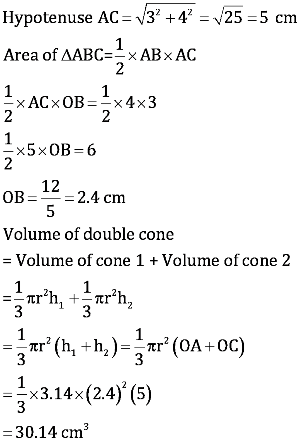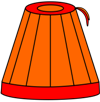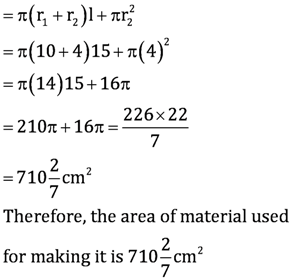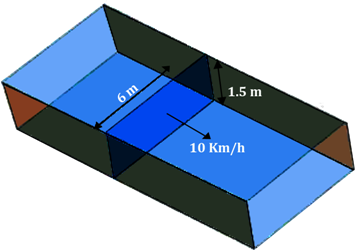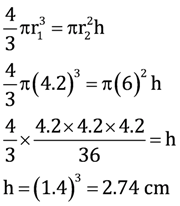Question 9:
A farmer connects a pipe of internal diameter 20 cm form a canal into a cylindrical tank in her field, which is 10 m in diameter and 2 m deep. If water flows through the pipe at the rate of 3 km/h, in how much time will the tank be filled?
Answer:

Consider an area of cross-section of pipe as shown in the figure.
Radius (r1) of circular end of pipe = 20/200 = 0.1 m
Area of cross-section

Speed of water = 3 km/h = 3000/60 = 50 metre/min
Volume of water that flows in 1 minute from pipe = 50 × 0.01 π = 0.5 π m3
Volume of water that flows in t minutes from pipe = t × 0.5π m3

Radius (r2) of circular end of cylindrical tank = 10/2 = 5 m
Depth (h2) of cylindrical tank = 2 m
Let the tank be filled completely in t minutes.
Volume of water filled in tank in t minutes is equal to the volume of water flowed in t minutes from the pipe.
Volume of water that flows in t minutes from pipe = Volume of water in tank
t × 0.5π = π ×(r2)2 ×h2
t × 0.5 = 52 ×2
t = 100
Therefore, the cylindrical tank will be filled in 100 minutes.

